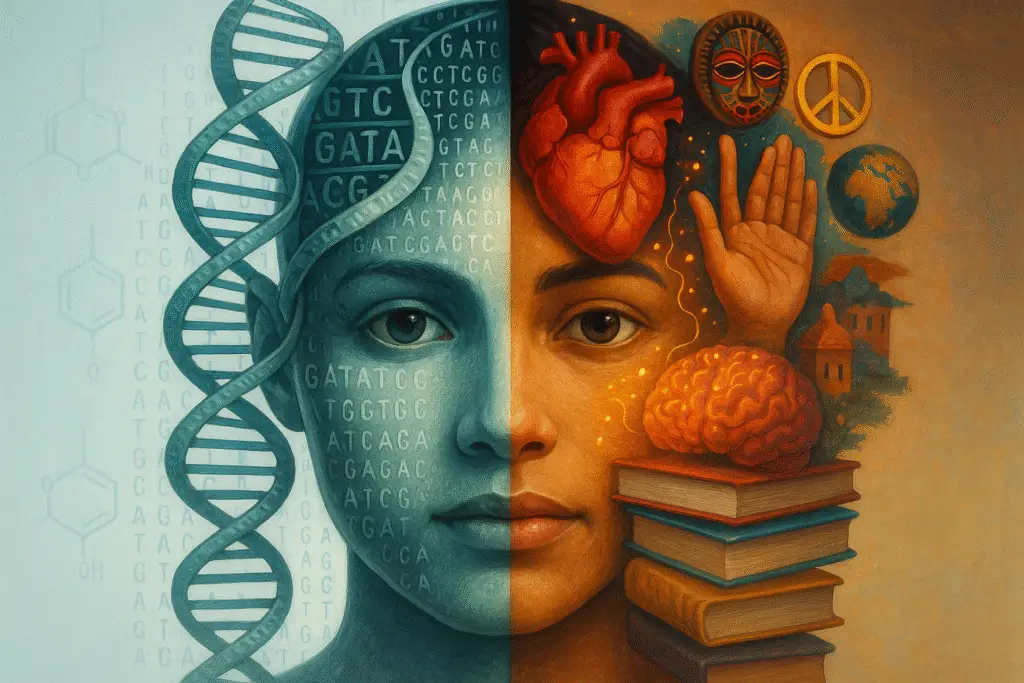Even a tiny byproduct of plastics (microplastics) damages our DNA, so why can’t vaping?
Vaping or using an e-cigarette is not just a habit anymore; it’s a fashion statement, a social trend, and for many, it’s a safer alternative to smoking.
Fruity flavors, sleek designs, and, most notably, social media hype have made vape pens a go-to choice for teens and young adults. The hype is so real that even those who’ve never touched a cigarette before are vaping just to look cool and fit in.
A vape in hand has become a modern-day accessory, making it essential in social circles. Whether it’s a night out at the club or a casual house party, we see people casually puffing away as if they’re just inhaling a flavor and blowing out some harmless smoke. Fruity, minty candy-like flavors make vaping feel like a fun, light, and safe experience.
But trust me, you are living in a delusion because beneath the minty flavors and colorful clouds lies a dangerous misconception.
Emerging research shows that vaping is just as harmful as conventional smoking.
Marketed as a “nicotine-free” and “safer substitute,” vapes contain harmful chemicals, flavors that are possible carcinogens and many of them also contain nicotine, even with the “nicotine-free” marketing that makes them addictive just like cigarettes.
These compounds altogether can damage our DNA, interfere with cellular function, and lead to long-term health issues.
Let me break down a pilot study on DNA damage and cancer caused by e-cigarette aerosols published in the journal Genes in very simple words for you to understand how harmful this so-called safer alternative can be.
The study claims that the use of e-cigarettes (e-cigs) is rising rapidly. In two years, e-cig use increased 77.8% (from 11.7% to 20.8%) among high school students and 48.5% (from 3.3% to 4.9%) among middle school students.

Currently, all the major cigarette manufacturers are marketing e-cigs.
E-cigarettes deliver chemicals through heating e-liquids, which mainly consist of vegetable glycerol and propylene glycol. Studies showed that formaldehyde and acetaldehyde, like low molecular weight carbonyl compounds, are formed from the thermal decomposition and oxidation of glycerol and propylene glycol.
These compounds induce DNA adducts, DNA adducts from when toxic chemicals (like those found in vape smoke or cigarette smoke) stick to your DNA, DNA-protein crosslinks and DNA-glutathione crosslinks.
Crosslink formation increases cell proliferation, causes mutations and leads to cancer-like conditions. Meaning, these compounds are carcinogenic, indeed.
Additionally, genes involved in apoptosis, immunity, metabolism, signal transduction, transportation, coagulation, and proliferation were found to be up- and down-regulated after exposure to these carcinogens.
In addition to aldehyde exposure, e-cigs contain nicotine, which delivers other carcinogens called tobacco-specific nitrosamines. It has been demonstrated that tobacco-specific nitrosamines induce DNA damage through DNA adduct formation, alkyl phosphotriester formation, and induction of p53 and Ras mutations.
Both aldehydes and tobacco-specific nitrosamines are classified as human carcinogens by the Agency for Toxic Substances and Disease Registry (ATSDR). These carcinogens have been identified as DNA-damaging agents, contributing to tumor initiation and tumor development in tissues.
Now, a common question is what happens after DNA damage?
Usually, DNA damage is corrected by the proofreading function of DNA polymerases that can recognise damaged sites in DNA.
However, when a cell accumulates a large amount of DNA damage suddenly, the DNA repair system gets saturated and can not correctly replicate and repair it, which accumulates mutations and causes cancer.
This study showed that even short-term e-cigarette exposure impacts the expression of several genes associated with DNA damage, DNA repair, cell cycle, and cancer. Genes related to DNA damage were differentially regulated in both buccal and blood samples, immediately after vaping 20 puffs using e-cigs.
Now I hope it is clear enough how damaging vapes are and what they are doing to the adult as well as the young population of the world.
Related article: Tattoo Ink Causes DNA Damage—and Much More, Says New Study
Wrapping up:
We now know that vaping isn’t just better than smoking; it is just repackaged harm, wrapped in flavor. What may appear to be a harmless habit or a trendy escape could be silently exposing a generation to genetic harm.
Serious consequences that we discussed above are masked behind the fruity flavors and cool designs. So next time you take a puff, remember what it could do to your genes.
Works Cited:
Auschwitz, Emily, et al. “Mechanisms of E-Cigarette Vape-Induced Epithelial Cell Damage.” Cells, vol. 12, no. 21, 1 Jan. 2023, p. 2552, www.mdpi.com/2073-4409/12/21/2552, https://doi.org/10.3390/cells12212552.
Hamad, Samera H., et al. “Pilot Study to Detect Genes Involved in DNA Damage and Cancer in Humans: Potential Biomarkers of Exposure to E-Cigarette Aerosols.” Genes, vol. 12, no. 3, 22 Mar. 2021, p. 448, pubmed.ncbi.nlm.nih.gov/33809907/, https://doi.org/10.3390/genes12030448.
Montjean, Debbie, et al. “An Overview of E-Cigarette Impact on Reproductive Health.” Life (Basel, Switzerland), vol. 13, no. 3, 18 Mar. 2023, p. 827, pubmed.ncbi.nlm.nih.gov/36983982/, https://doi.org/10.3390/life13030827.

